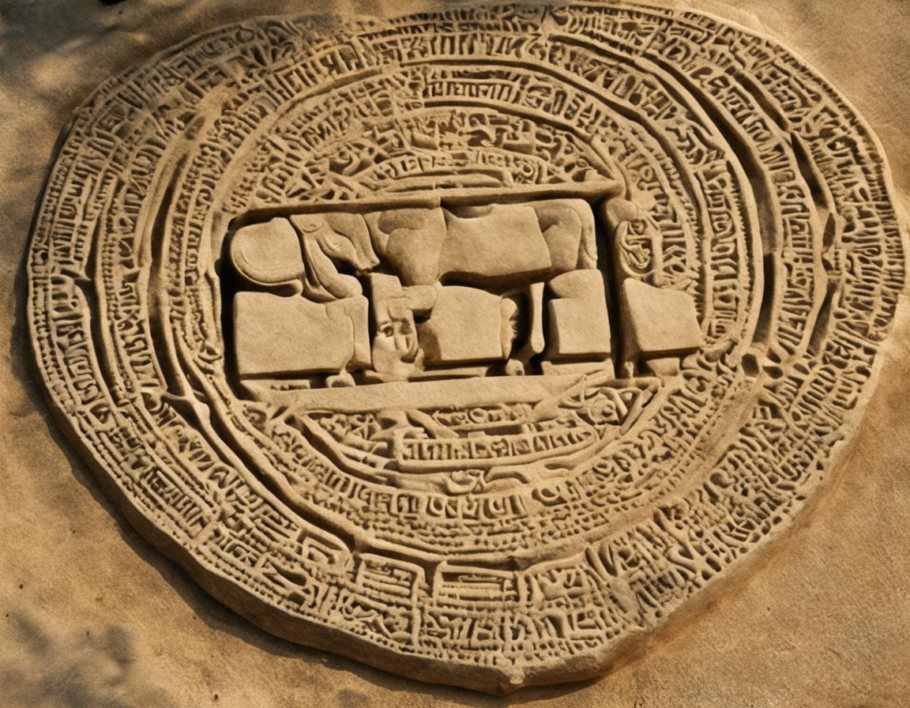In the annals of history and mythology, few tales stand out as prominently as that of the Ram Setu stone. This structure, also known as Adam’s Bridge, is a causeway that stretches between India and Sri Lanka. The bridge is said to have been built by Lord Rama’s army of vanaras (apes) in the epic Ramayana, making it a symbol of religious and cultural significance for millions of people.
But what is the real story behind the Ram Setu stone? Is it just a myth, or is there some truth to the ancient legends? In this article, we will delve deep into the mystery surrounding this enigmatic structure and explore some of the fascinating theories and discoveries that have shed new light on its origins.
The Mythological Origins of Ram Setu Stone
The Ram Setu stone finds its roots in the ancient Indian epic, the Ramayana. According to the epic, Lord Rama, accompanied by his loyal brother Lakshmana and the mighty vanara army led by Hanuman, set out to rescue his beloved wife Sita from the demon king Ravana in Lanka.
To reach Lanka, Lord Rama’s army needed to cross the vast ocean that separated India from the island kingdom of Lanka. Unable to find a way to cross the ocean, Lord Rama enlisted the help of Hanuman, who with his superhuman strength and agility, built a bridge of stones and boulders across the ocean, allowing the army to march across to Lanka.
This bridge, now known as the Ram Setu stone, is believed to be a testament to the unwavering faith and devotion of Lord Rama’s followers, as well as a symbol of the power of good over evil.
The Geological Enigma of Ram Setu Stone
For centuries, the Ram Setu stone has baffled scientists and historians alike. The alignment of the stones and the composition of the structure have raised questions about its natural origins. While some believe that the bridge is a natural formation, others argue that its peculiar composition points to a man-made structure.
Recent studies and satellite images have provided new insights into the geological origins of the Ram Setu stone. Scientists have discovered that the bridge is made up of limestone shoals, which are believed to have formed naturally over thousands of years. However, the arrangement of the stones and the presence of man-made artifacts on the bridge have fueled speculation that it could indeed be a man-made structure.
Recent Discoveries and Controversies Surrounding Ram Setu Stone
In 2007, the Indian government announced plans to conduct a scientific study of the Ram Setu stone to determine its origins and significance. The proposed project, known as the Setusamudram Shipping Canal Project, aimed to dredge a shipping channel through the bridge to facilitate maritime trade.
The project sparked controversy and outrage among religious groups and environmentalists, who viewed the destruction of the bridge as a desecration of a sacred site. The matter eventually reached the courts, which called for a halt to the project until further studies could be conducted.
In the years since, archaeologists and geologists have continued to study the Ram Setu stone, uncovering new evidence and clues about its origins. While the debate between myth and science continues, the bridge remains a fascinating enigma that has captured the imagination of people around the world.
Scientific Perspectives on Ram Setu Stone
From a scientific perspective, the Ram Setu stone is viewed as a natural formation that has been shaped by geological processes over time. The bridge is believed to be a series of limestone shoals that have been deposited by sedimentation and other natural forces.
While the formation of the bridge may have been influenced by human activities such as sediment accumulation and erosion, scientists argue that there is no conclusive evidence to support the theory that it was built by Lord Rama’s army.
Despite this, the Ram Setu stone remains an object of fascination for scientists and researchers, who continue to study its geological and cultural significance. The bridge serves as a reminder of the rich history and heritage of ancient India, and its mysteries continue to captivate scholars and enthusiasts alike.
FAQs
Q: Is the Ram Setu stone a natural formation or a man-made structure?
A: While there is ongoing debate, scientific evidence suggests that the Ram Setu stone is a natural formation made up of limestone shoals that have been deposited over time.
Q: What is the significance of the Ram Setu stone in Hindu mythology?
A: The Ram Setu stone is believed to be the bridge built by Lord Rama’s army to cross the ocean and rescue Sita from the demon king Ravana, as depicted in the epic Ramayana.
Q: Why is the Ram Setu stone considered a sacred site?
A: The bridge is revered by millions of Hindus as a symbol of Lord Rama’s divinity and his victory over evil, making it a significant religious and cultural landmark.
Q: Has any conclusive evidence been found to prove the man-made origins of the Ram Setu stone?
A: While there have been claims and theories suggesting human involvement in the construction of the bridge, no definitive evidence has been found to support this.
Q: What measures have been taken to preserve the Ram Setu stone as a historical and cultural site?
A: Efforts have been made to study and protect the bridge, with the Indian government implementing measures to ensure its preservation and investigate its significance.
In conclusion, the Ram Setu stone continues to captivate and intrigue people from all walks of life, blurring the lines between myth and reality. Whether a natural wonder shaped by geological forces or a testament to the divine intervention of Lord Rama, the bridge remains a symbol of faith, devotion, and the enduring mysteries of our world.

